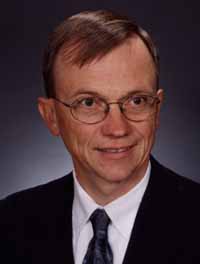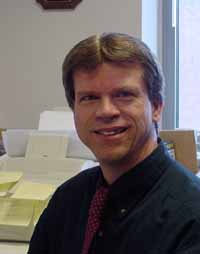|
About the Authors
|

Douglas W. Green
|

Thomas Paul O’Brien
|
Douglas W. Green, Ed. D.
Doug is a graduate of Clarkson, has an M.A. from Colgate is science teaching, a certificate of advanced standing in school administration from SUNY Cortland and a doctorate in educational theory and practice from Binghamton University. He started his professional life as a high school chemistry teacher. He also taught physics and developed and taught the first computer programming courses at his school in 1976. He went on to gain administrative experience as a K-12 science chair and Binghamton’s first district director of computer services. He also served as director of instruction and after eleven years assisting four superintendents in all matters at Binghamton’s central office, he became the principal of Woodrow Wilson Elementary School where he has served since 1993. Wilson School serves over 500 students from a diverse population. One-forth of the student body are refugees from all over the world. Over one-third are minorities and about one-fifth qualify for special education services. In this capacity Doug supervises over 90 adults from teachers to custodians.
Doug has taught computer use for educators at Binghamton University and currently teachers administration and supervision for future administrators at the State University of New York at Cortland. From 1980 to 1992 Doug served as a contributing editor for InfoWorld where he reviewed innovative hardware and software. During this time most of the current crop of desktop software came into being. This meant that he was among the first to review applications such as 3D modeling and rendering, desktop publishing, illustration, graphing, and multimedia editing. Doug has published over 300 articles on educational and computer-related topics. In most cases his co-author was his wife Denise.
Thomas Paul O’Brien, Ph. D.
Tom is a graduate of Thomas More College with a B.A. in Chemistry & Secondary Education. His M.A. and Ph. D. in Curriculum & Instruction in Science Education are both from University of Maryland-College Park.
Tom is currently an Associate Professor and Director of the Division of Education of the School of Education and Human Development at Binghamton University in Binghamton, New York. He is director of the Division of Education and coordinator of secondary education and is responsible for graduate preservice and inservice K-12 science education programs. He has also taught science and math at the high school level.
At Binghamton University, Tom has written and directed numerous science education grant projects totaling over $4.3 million. They include National Science Foundation grants, Howard Hughes Medical Institute grants, and NYS Title II Grants. Among his many teaching awards are the Science Teachers Association of New York State/Southern Section Service Award, Spring 2002, the American Chemical Society, Binghamton Section, Distinguished Service Award, Spring 2001, the New York State Association of Teacher Educator's (NYSATE) "R. Neal Appleby Award for New York's State's Outstanding Teacher Educator.", and the SUNY Chancellor's Award for Excellence in Teaching. Tom is also the winner of the American Chemical Society's National Chemistry Week's Phoenix Award for Best Activity.
His publications include:
Chemistry in the Community (ChemCom), American Chemical Society, Kendall-Hunt, 1988. Contributions: member: Writing Team, Synthesis Committee, Revision Team, and Teacher's Guide Editor.
New York Science, Technology & Society Education Project Teacher Guide, The Research Foundation of the State University of New York, 1996. Co-author with Dennis Cheek.
O'Brien, T. (March 1995). Ch.44/Literature Pathways to Science Processes (pp.138-141) and Ch.45/Integrated Whole Language & Science: A Dynamic Duo (pp.142-145) in CESI Sourcebook VIII from the Council for Elementary Science International (CESI): Through the Rainbow: Children, Science and Literature; Audrey Brainard & Denise Wrubel, editors.
O'Brien T (October 2000). A toilet paper timeline of Evolution: 5 E cycle on the concept of scale. American Biology Teacher, 578-582.
O'Brien T & Seager, D. (Nov.2000). 5 E(z) steps to teaching Earth-Moon scaling: An interdisciplinary mathematics - science - technology miniunit. School Science & Mathematics.
O'Brien, T., Stannard, C., & Telesca, A. (1994). A baker's dozen of discrepantly dense demonstrations. Science Scope, 18(2), 35-38.Stannard, C., O'Brien, T., & Telesca, A. (Winter 1994). STEP UP to networks for science teacher professional development.Journal of Science Teacher Education, 5(1),30-5.
O'Brien, T. (1993). Teaching fundamental aspects of science toys. School Science and Mathematics, 93, 203-207.
O'Brien, T. (1992). Science inservice workshops that work for elementary teachers. School Science and Mathematics, 92, 422-426.Stannard, C., O'Brien, T., & Telesca, A. (1992). A ball with pure translational motion? The Physics Teacher, 30, 526-527.
O'Brien, T. (1992). Biological bafflers, discrepant data, fascinating facts & quizzical quandaries. The American Biology Teacher, 54(5), 263-267.
O'Brien, T. (Spring 1992). The concerns-based design and evaluation of an Institute for Chemical Education demonstration workshop. Science Educator, 1(1), 21-26.
O'Brien, T. (1991). The science and art of demonstrations. Journal of Chemical Education, 68, 933-936.
Back to the June Cover Page
|

